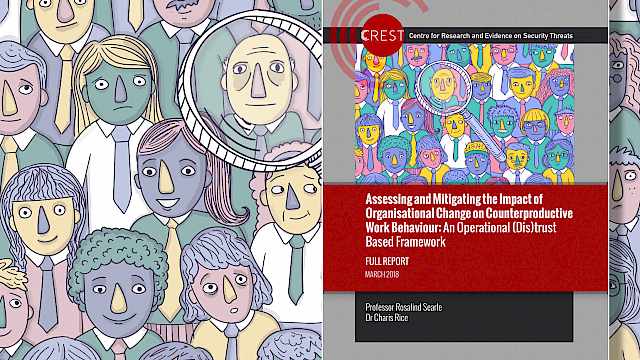The evidence base for behavioural-focused protective security programmes is extremely shallow. The vast majority of research is descriptive with little evaluation of the effectiveness of existing campaigns or ‘what works’ in encouraging ordinary citizens to be vigilant against, and report, potential terrorism-related activities in public spaces. However, there is more evidence on barriers and motivations for reporting.
Key points
Research on the motivations and barriers for public reporting of suspicious behaviours linked to terrorism – broadly defined as anything that appears out of place, or unusual so that it could reasonably be considered indicative of pre-operational attack planning – is limited. The most common barriers to reporting are the fear of retribution and concerns over getting an innocent person into trouble.
Reporting barriers vary by gender and age. Younger and female reporters are more strongly dissuaded by fear of retaliation than older males.
Clearly explaining that reports will be taken seriously increases the effectiveness of public messaging campaigns which aim to encourage people to report terrorism-related suspicions that indicate hostile intent, for example relating to reconnaissance or attack planning.
Airport passengers report feeling safer when they are aware of the opportunities to report suspicious behaviour and know who to contact if they see a suspicious item or have concerns about a fellow passenger.
Younger airport users are as likely to notice suspicious activities at the airport as older passengers, but less likely to report these concerns to airport staff.
Retail outlets located within or near mass transportation hubs have a role to play in maintaining security because members of the public view them as a means of reporting potential threats. Staff should be trained to respond appropriately to ensure that information reaches transport and security officials.
Even pre-school age children can be taught to identify and report unsafe packages based on their physical characteristics and location and can retain this capacity for weeks after training.
Terrorist decision-making when carrying out or preparing attacks is poorly understood, as is the effectiveness of deterrence by denial, an approach that seeks to demonstrate the low likelihood that an attack will succeed.
The emphasis in this report is on academic literature from 2017 onwards, however, due to the extremely limited research in this area, it draws from work published outside this period and grey literature. It also includes work from comparable fields, including studies relating to general criminality. To supplement the limited research, four studies are the subject of more detailed analysis.
The report is in two parts; the first focuses on public reporting and bystanders’ motivations or barriers for doing so. Part two examines how hostile actors perceive and experience security measures. It is important to understand protective security from both perspectives to understand its effectiveness.
Read more
- FEMA (2012). Improving the Public’s Awareness and Reporting of Suspicious Activity: Key Research Findings from Literature Review, Household Surveys, Focus Groups and Interviews, Federal Emergency Management Agency report P-903
- Gallagher, M. (2010). An Analysis of the Public Reporting to Lothian and Borders Police on Perceived Terrorism-Related Matters after the Glasgow Airport Terrorist Attack in 2007, Journal of Terrorism Research, 1:1, 41–53
- Gill, P., Marchment, Z., Corner, E. & Bouhana, N. (2020). Terrorist Decision Making in the Context of Risk, Attack Planning, and Attack Commission, Studies in Conflict & Terrorism, 43:2, 145–160
- May, M., Shayter, A., Schmick, A., Barron, B., Doherty, M. and Johnson, M. (2018). Teaching preschool children to report suspicious packages to adults, Journal of Applied Behavior Analysis, 51, 571–589
- Pearce, J.M., Parker, D., Lindekilde, L., Bouhana, N. & Rogers, M.B. (2019). Encouraging public reporting of suspicious behaviour on rail networks, Policing and Society, DOI: 10.1080/10439463.2019.1607340
- Shiwakoti, N., Wang, H., Jiang, H., & Wang, L. (2019). Examining passengers’ perceptions and awareness of emergency wayfinding and procedure in airports, Safety Science, 118, 805–813
Copyright Information
As part of CREST’s commitment to open access research, this text is available under a Creative Commons BY-NC-SA 4.0 licence. Please refer to our Copyright page for full details.
IMAGE CREDITS: Copyright ©2024 R. Stevens / CREST (CC BY-SA 4.0)






